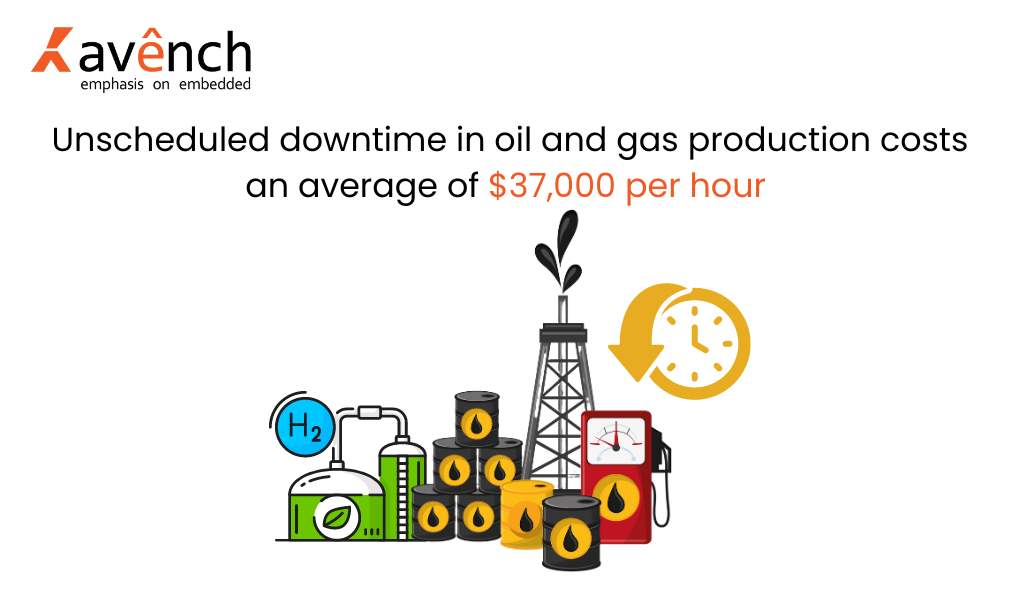The iiot in oil and gas industry is a complex ecosystem, with vast transcontinental pipelines. Ensuring the success of the infrastructure depends largely on the health of this system. Maintenance strategies used to be reactive, addressing problems only after they arose, leading to costly downtime and potential security risks Today, a powerful twin is repeating this trend: embedded systems and industrial IoT (IIoT). By harnessing both capabilities, oil and gas companies can transition from active maintenance to proactive maintenance, improving efficiency and ensuring pipeline integrity
Embedded Systems: The Data Acquisition Champions

Embedded systems are specialized computers designed for specific tasks within a larger system. iiot in oil and gas industry, they act as intelligent nerve centers, collecting crucial data from an array of sensors strategically placed along the pipeline. These sensors monitor vital parameters like pressure, temperature, vibration, and flow rate.
Embedded systems are adept at:
- Real-time monitoring: They continuously gather sensor data, providing a real-time snapshot of the pipeline’s health.
- Data pre-processing: They perform initial data cleaning and formatting, preparing it for further analysis.
Communication: They can transmit data wirelessly or through wired connections to central monitoring systems for deeper analysis and decision-making.
IIoT: Weaving the Data Network
IIoT in oil and gas industry represents the network of connected devices communicating with each other and central platforms. In the context of pipelines, embedded systems act as the data acquisition points, feeding information into the IIoT network. This network then becomes the central nervous system, facilitating communication, analysis, and generating actionable insights.
Here’s how IIoT empowers proactive maintenance:
- Data aggregation: IIoT platforms collect data from multiple embedded systems along the pipeline, providing a comprehensive view of the entire infrastructure.
- Advanced analytics: These platforms utilize powerful analytics tools to identify patterns and trends in the collected data.
- Predictive modeling: By analyzing historical data and identifying deviations from normal operating parameters, IIoT can predict potential equipment failures before they occur.
The Synergy: A Winning Combination
 Embedded systems and IIoT work hand-in-hand to deliver a robust proactive maintenance strategy. Embedded systems provide the raw data – the lifeblood of IIoT analysis. Here’s how they work together:
Embedded systems and IIoT work hand-in-hand to deliver a robust proactive maintenance strategy. Embedded systems provide the raw data – the lifeblood of IIoT analysis. Here’s how they work together:
- Continuous monitoring: Embedded systems gather real-time data on pressure, temperature, vibration, and flow rate.
- Data transmission: The data is securely transmitted to the IIoT platform for analysis.
- Advanced analytics: IIoT in industrial automation platforms analyzes the data, identifying trends and potential anomalies.
- Predictive insights: Based on analysis, the system predicts potential issues like leaks, corrosion, or equipment failure.
- Proactive action: Maintenance teams are alerted well in advance, allowing for timely interventions and repairs before a major breakdown occurs.
Benefits of Proactive Maintenance with Embedded Systems and IIoT in Oil and Gas Industry
Transitioning to a proactive maintenance strategy offers several compelling benefits for oil and gas companies:
- Reduced downtime: Predicting and addressing issues before they escalate minimizes unplanned disruptions and keeps pipelines operational.
Avench is one of the leading embedded product design companies in usa. For any sales queries, contact us at +1 (775) 404-5757. You can also email us at sales@avench.com. We will be happy to assist you.

